On Aug. 26, 2017, Hurricane Harvey struck the metropolitan area of Houston, Texas. The wettest tropical storm ever in the U.S., it brought utter devastation that displaced 30,000 people and led to 17,000 rescues. Anticipating the possibility of a major incident, the U.S. Coast Guard had pre positioned several Airbus MH-65D Dolphin helicopters to the area. One of the aircraft commanders was Lt. John “JJ” Briggs.
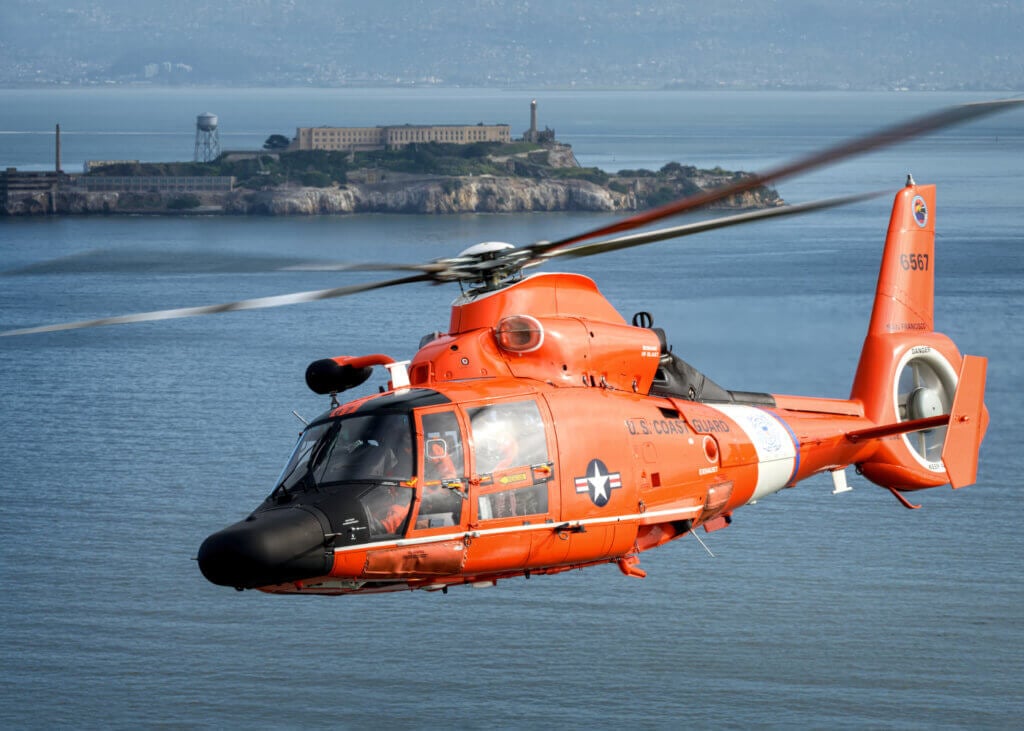
Launching at 2:30 a.m., into a night illuminated only by lightning bolts from the storm, Briggs and his crew battled winds exceeding 80 knots (150 kilometers per hour) and visibility down to 50 feet (15 meters).
Called to assist a critically ill pregnant woman trapped in her attic by rising floodwaters, rescue swimmer Tyler Gantt was hoisted between high tension powerlines and 100-ft. (30-m) tall trees, only to discover an entire family sheltering in the building.

Back in the helicopter, the rain and wind were so savage that the aircraft began to flood, and soon its equipment started failing. One by one, the stabilization system, avionics and intercom systems gave out — the crew yelling at each other to communicate while they struggled to keep their helicopter in the air. Then, with the rescue swimmer on the ground and waist deep in rapidly flowing water, the hoist stopped working.
With no way to bring his fourth crewmember back on board, fuel critically low, and systems only just functioning enough to keep the helicopter airborne, Briggs was forced to do the unthinkable. His co-pilot turned the aircraft around and headed back to base, leaving their rescue swimmer behind on what was his first ever search-and-rescue (SAR) call.
Incremental improvement
Now a Lieutenant Commander, Briggs is based at Air Station San Francisco, where he is the assistant operations officer. While this brings a deep involvement in the management of operational risk, his role as an instructor pilot is also to prepare other Coast Guard aircrew for the challenges of the job.
“It means taking newer pilots through the syllabus for qualification, and making sure that people are staying standard within their flight protocols,” he explained. “But I also stand a search-and-rescue duty, like every other pilot in the unit.”
Briggs has had a somewhat unconventional career, initially enlisting for service onboard ships before becoming an avionics technician and then qualifying as a flight mechanic, which made him responsible for operating the hoist and managing the aircraft cabin during rescues. He has been qualified in a crew position in every model of the MH-65, including the latest Echo variant which brings the aircraft into the digital age with a full glass cockpit.
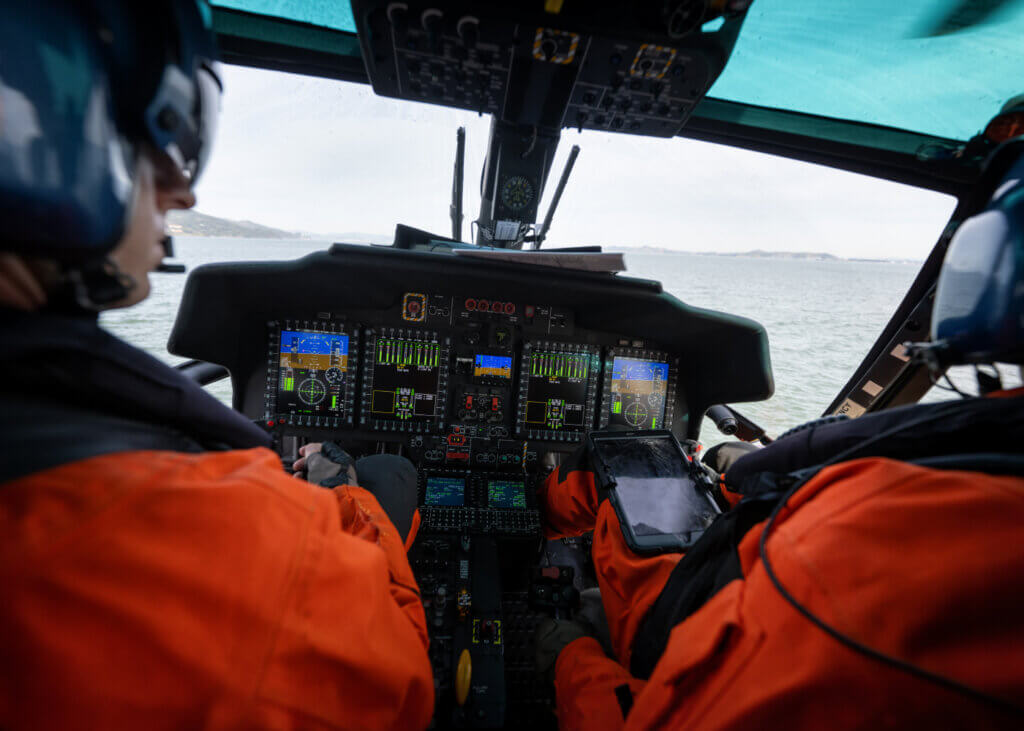
Developed as a version of the Aerospatiale Helicopter Corporation (now Airbus Helicopters) AS365, the Dolphin was designated the HH-65 upon its entry into service in 1985 as a short-range recovery aircraft. An impressively well-equipped helicopter from the outset, it was able to operate from Coast Guard cutters, certified for single-pilot instrument flight rules (IFR) operation, and came with a four-axis autopilot.
Incremental upgrades over its service life have taken the aircraft from initial Alpha through to Echo variants, which have brought compatibility with night vision goggles (NVGs), more powerful and reliable Safran Arriel engines, as well as upgrades to the Fenestron and avionics. From the Charlie models, the aircraft adopted the MH-65 designation to better reflect its multi-role mission set and airborne use of force capability for the Helicopter Interdiction Tactical Squadron (HITRON) mission.
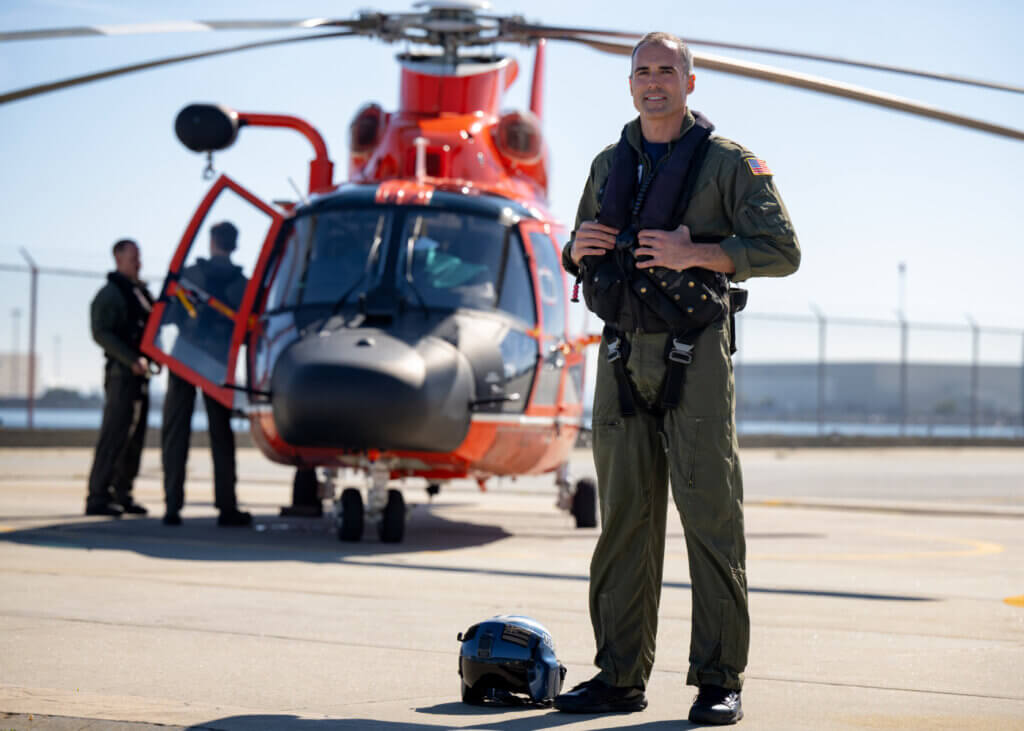
“The major difference between the Delta and the Echo is the avionics suite, but the airframe remains the same,” Briggs said. “The 65 has proven to be a good platform for SAR over its 30-plus-year lifespan. It’s definitely been the workhorse of the fleet.”
It is a workhorse that has been put to use all over the U.S. — from Hawaii to the Great Lakes, and out at sea on the Coast Guard’s cutter fleet. And at Air Station San Francisco, there is plenty of trade for the crews.
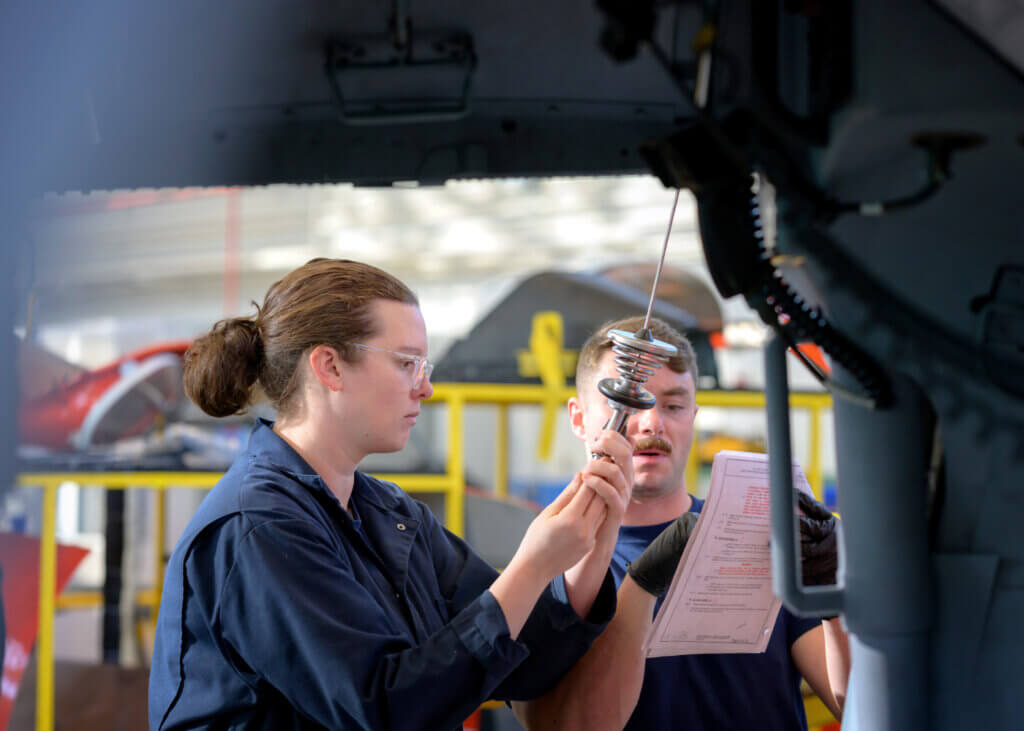
“We have kind of a mild climate year-round,” explained Petty Officer 1st Class Jacob Wolf. “We do medevacs from cruise ships and fishing boats, and there’s a lot of kite surfing and windsurfing around here. Those guys get stuck out all the time.”
As an aviation maintenance technician and flight mechanic, Wolf has the responsibility of keeping the aircraft airworthy in addition to his role in the crew as the hoist operator.
“I think it instills a little bit more pride in what you’re doing on the aircraft and on the hangar deck,” he said. “It’s a good mix, but I’d say you’re on the hangar deck more than you’re actually flying on average.”
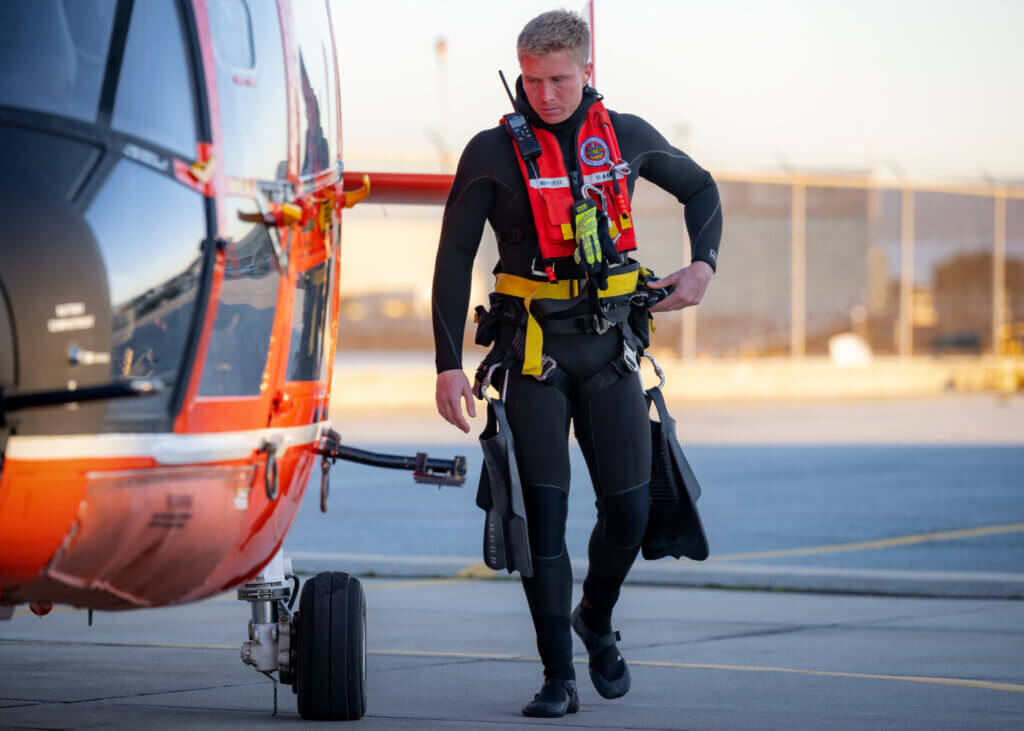
Both the flight mechanics and the rescue swimmers are drawn from the enlisted ranks and begin their Coast Guard careers as non-rates following an initial training boot camp. This gives newcomers to the service a chance to see what trades are available before applying to their A-School for trade training. Aviation is a popular choice.
“It’s one of the more popular rates within the Coast Guard,” Wolf explained. “I worked for six months at an air station as a non-rate, and then went to A-School in Elizabeth City, [North Carolina,] and that was five months of training.”

Power Train
The North Carolina base is one of the Coast Guard’s busiest. It is home to the Aviation Technical Training Center, where the prospective flight mechanics will be expected to become technical experts in the mechanics of their aircraft. Graduation is followed by assignment to an air station and qualification as basic aircrew — their first qualification to fly as an aircraft crewmember and get familiar with the flying environment on training flights.
“It’s kind of like a waiting process to get qualified because it takes time to train everybody,” Wolf said. “Once you start your flight mechanic training, it’s a crawl, walk, run process.”
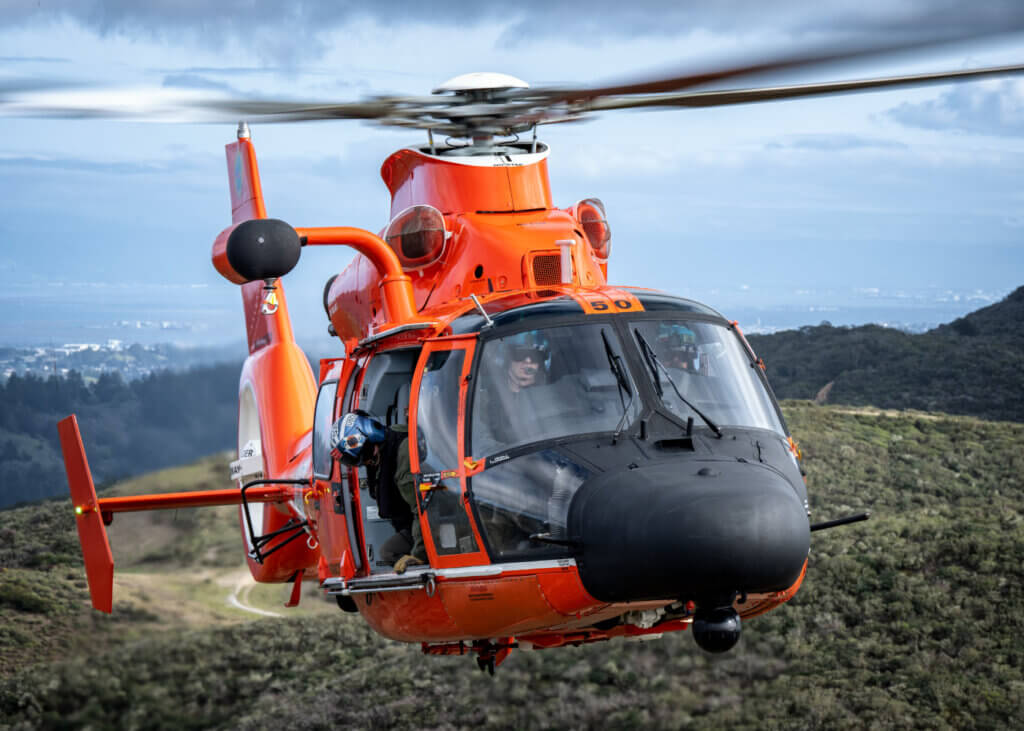
Full qualification as a flight mechanic will mean a place on operational SAR missions, so it is rigorous and involves a progression from basic hoist operations on a static aircraft through to the deployment of rescue swimmers into the water. The modern training program takes full advantage of synthetic and virtual reality (VR) environments that allow trainees to experience hundreds of repetitions of the most vital motor skills.
As a flight mechanic himself earlier in his career, Briggs was instrumental in setting up this new approach to training.
“They use a VR headset to train maneuvers and procedures,” he explained. “We want them to communicate in a very standardized way, and by doing 250 to 300 reps, they get the ‘muscle memory’ and it shortens the amount of time needed in the helicopter. They go into it with more confidence that they’re doing the procedure correctly.”
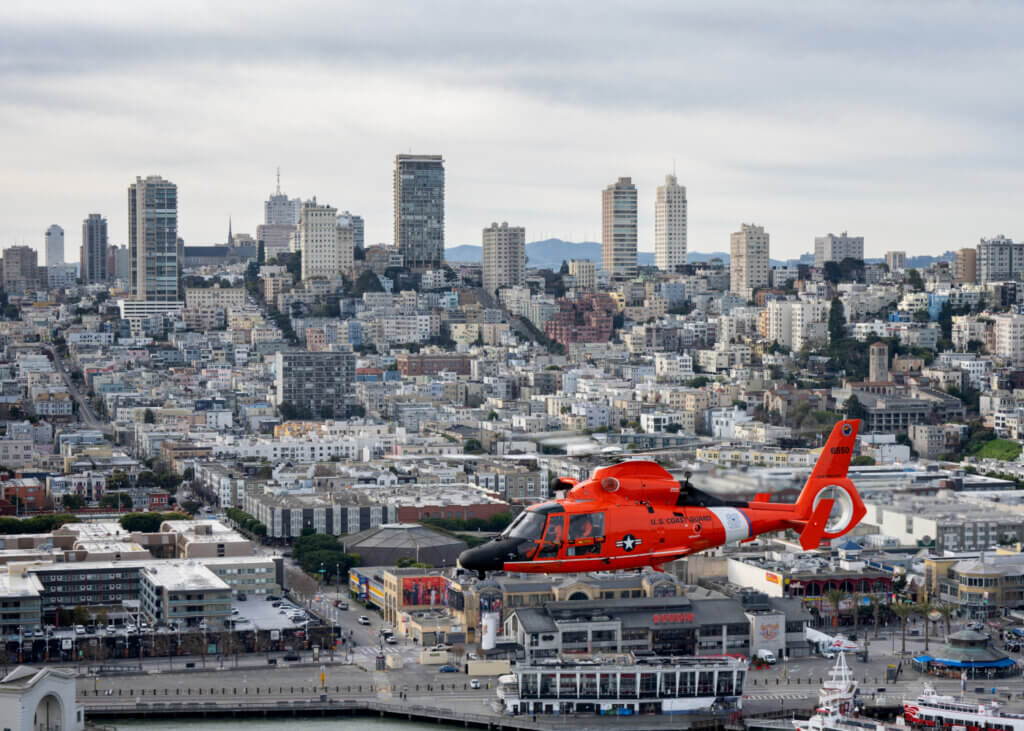
As vital as it is in developing the skill sets required to operate the hoist correctly, synthetic training is less applicable for the rescue swimmers themselves.
“They’re athletes,” Briggs said. “Uniquely qualified in that position, and they need to be able to drop into the ocean and operate independently, alone and unafraid.”
Aviation Survival Technician 2nd Class Tony Borr is one of the rescue swimmers at Air Station San Francisco.
“I wanted to do something outside the box — something most people wouldn’t do,” he said about what led him to his career.
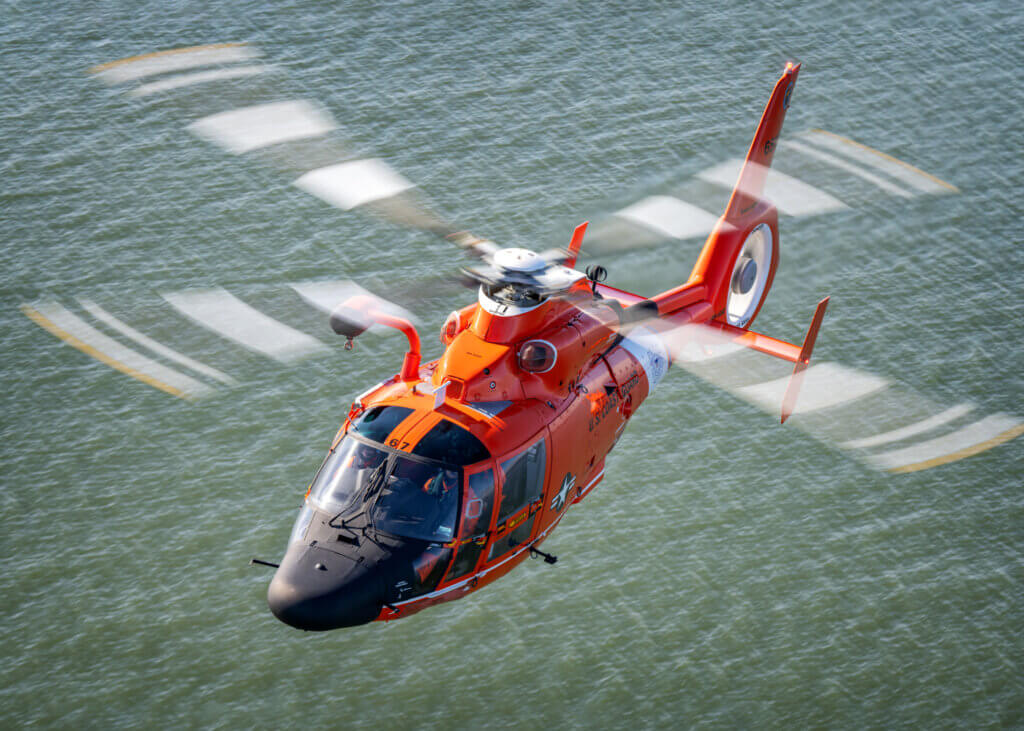
Jumping from a helicopter into the open ocean to rescue people in distress seemed to fit those criteria, so Borr applied to join the Coast Guard while in college. A-School graduates in his rate are initially qualified as aviation survival technicians and become rescue swimmers after completing a grueling training course at their active unit.
As with the rest of his crew, though, qualifying in the role is only the beginning of a continual process of improvement, development, and refinement. Post-graduate training for Coast Guard aircrew is even more intense, culminating with the Advanced Helicopter Rescue School in Astoria, Oregon, which provides the high sea states and rugged cliffs and caves used to hone the edge of Coast Guard crews who are already highly skilled and experienced.
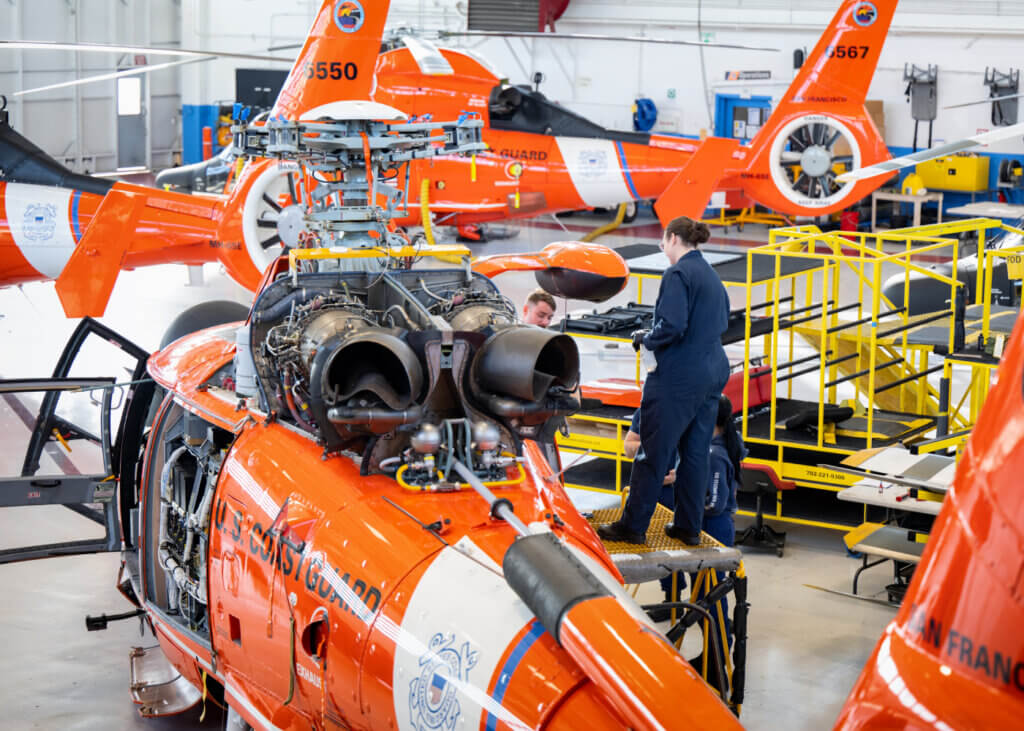
Again, Briggs has a unique perspective, having instructed the course both as a flight mechanic and a pilot.
“Things get very difficult — high seas, high winds, big wave action. It creates a really difficult environment,” he said. “Every single person in the crew is important and I rely on those crew members 100%. I didn’t realize how important my position was as a flight mechanic until I was a pilot.”
The relentless training and extreme exposure to the elements is essential to develop the skills required not only to survive in those conditions but also to continue to operate. To be highly effective despite the environment doing everything it can to stop them takes an extraordinary training effort in skills that fade very quickly, and so they must be constantly refreshed.

But the intensity is important not just to teach and test the physical skills, it is also essential for building the confidence of the crews both in themselves and each other, and for teaching them how to combine their efforts in a way that optimizes their performance as a crew. It is the ultimate team effort, which depends on mutual respect.
“Sometimes, the least experienced person in the helicopter has the answer that we need because they are looking at it from a fresh direction,” Briggs explained. “We are always problem-solving and it’s never the same. So, we have a lot of creative thinkers and we need to cultivate that.”
Harnessing and molding an open, creative culture in an environment where risk must be weighed against human life is an astonishingly difficult challenge. The Coast Guard goes to great lengths to define the envelope of risk and provide a framework that crews must use to ensure that they are taken only where necessary.

Risk and reward
“We have to nail down what is the gain of the mission, and at the highest end of that spectrum is saving human life,” Briggs explained. “Secondly, what is the risk? And we have to look at the whole environment — from weather, day or night through to crew composition and fatigue level. All of these factors come together to a decision about what our risk is, and we divide that into red, yellow and green.”
The color codes indicate when the risks need to be elevated beyond the crew to higher authority for objective scrutiny, but every member of the crew gets a say.
In cases where they perceive there is no other way to save a life, Coast Guard crews are authorized to fly the aircraft beyond its normal operating limits to the extent that it will effectively destroy the aircraft.
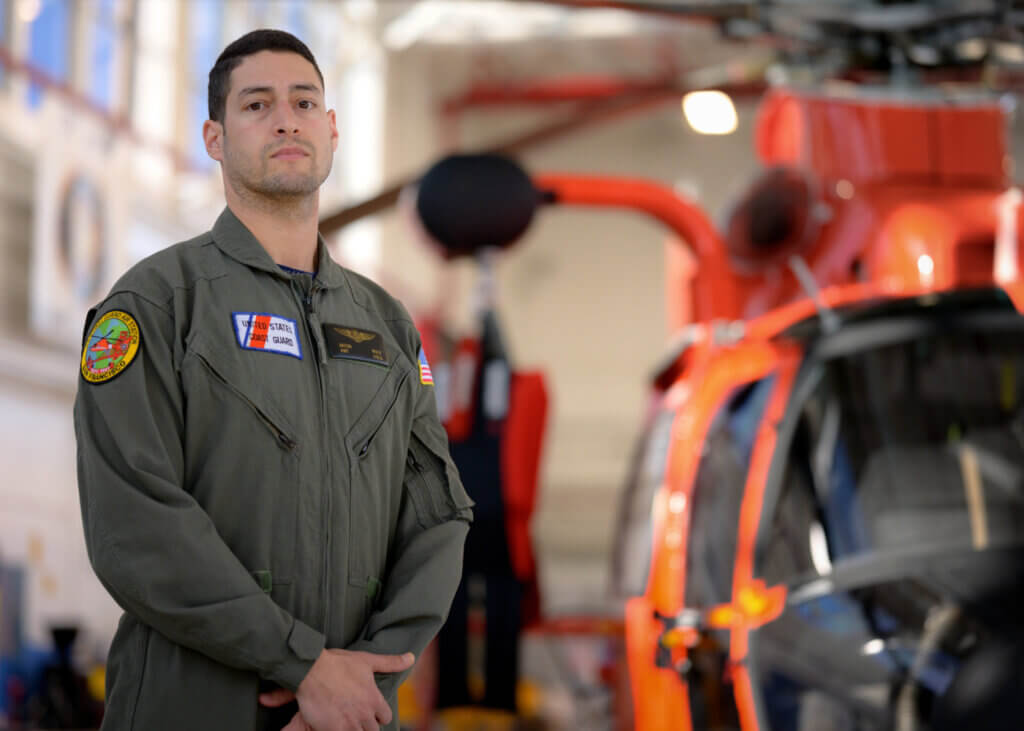
“We can sacrifice the aircraft,” Briggs said. “But I cannot sacrifice a crew member in the effort to save another human life.”
In reality, such extreme decisions are rarely clear-cut. In the moment, outcomes are highly contingent and almost impossible to predict, and crews must make a judgement call, as was the case at 3 a.m. on Aug. 27, 2017, when Briggs was forced to return his barely flyable helicopter to base without his rescue swimmer.
“It didn’t feel good to leave him,” Briggs said. “It was his first search-and-rescue case ever, but he was well trained.”

When Briggs and his crew returned to the scene to recover Gantt, they completed an historic onload of 14 survivors, well beyond the normal load capacity of the aircraft.
The confidence and trust that Briggs and his crew had in their rookie rescue swimmer can only have been matched in his confidence that they would return, despite the incredible risks of doing so in such a compromised aircraft and in those weather conditions.
“I really like working with other people that are likeminded, believe in the mission and are willing to train hard for that mission,” Briggs said. “They’re willing to accept some risk, but they’re smart about the risk they’re accepting. I enjoy that.”
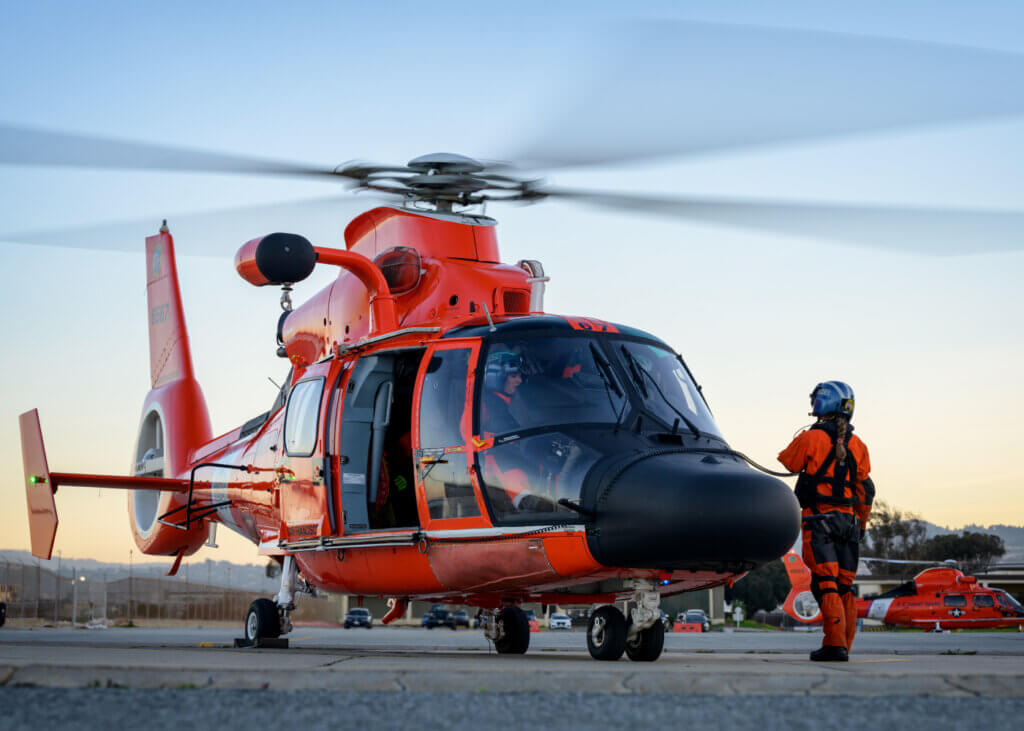
As important as trust and confidence in their skill and dedication are to the crews themselves, they are perhaps even more important for the other parties involved in any rescue. One of the most critical elements of survival is maintaining the will to live. In many cases, a person’s ability to stay alive in extreme circumstances is credited entirely on their hope of being rescued.
“To me, search-and-rescue is a very personal thing in that it is the biggest moment of someone’s life,” Briggs said. “Think about the worst-case scenario of someone’s loved one on a sunken fishing boat. They’re on their own, and I want to be able to give them an amount of hope that they can count on.”
For their valor, pilots Lt. John Briggs and Lt. Greg Bukata, and rescue swimmer Petty Officer 3rd Class Tyler Gantt were decorated with the Distinguished Flying Cross, awarded for heroism or extraordinary achievement while participating in aerial flight.
Aviation maintenance technician Petty Officer 1st Class Chris Flores was decorated with the Air Medal, awarded for heroic or meritorious achievement while participating in aerial flight.





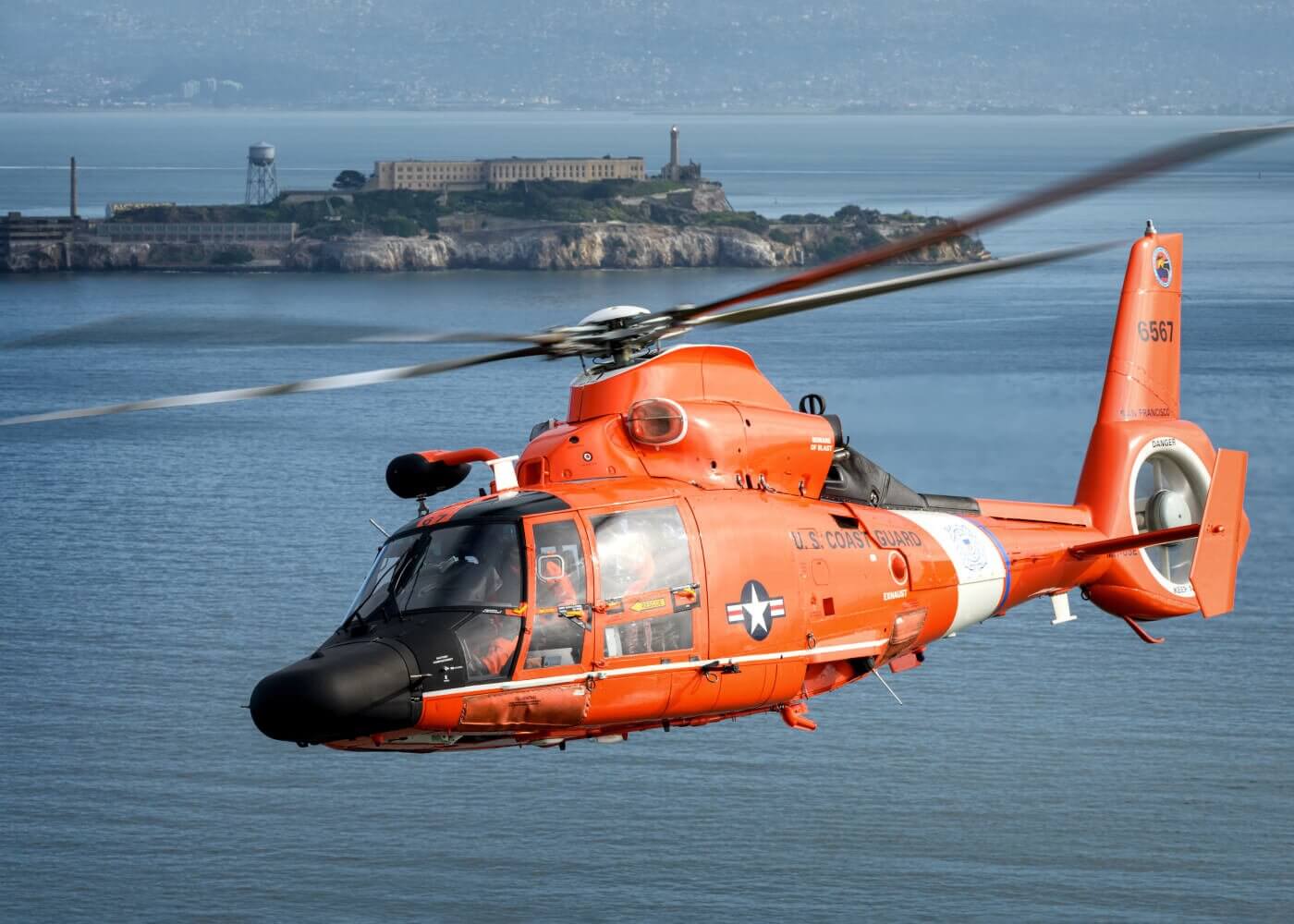
As a former Coast Guard HH-3F AC, I enjoyed this article. I think it’s accurately descriptive and well-written, and it awards credit where it’s due. Every Coast Guard Air Station presents its own challenges, sometimes very different from other locations, and San Fran is a good example of that. I’m always encouraged by the astonishing fact that the Coast Guard continues, year in and year out, to attract, train and utilize some of the finest young people to be found anywhere, and never fails to endlessly exceed its own standards.